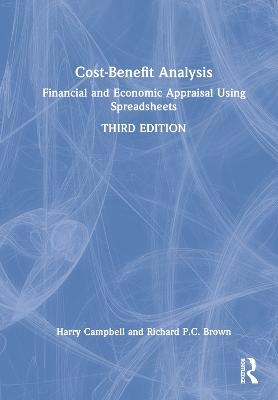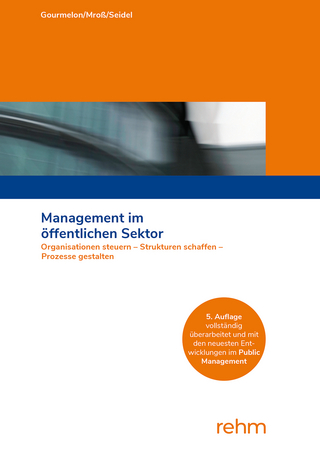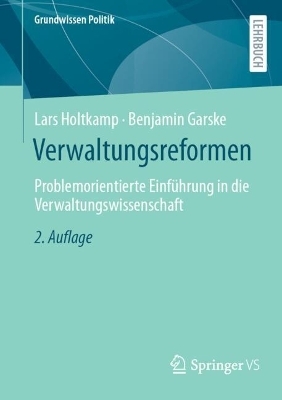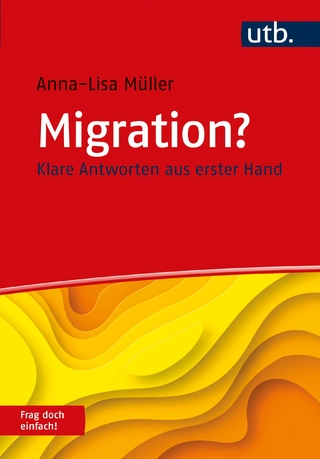
Cost-Benefit Analysis
Routledge (Verlag)
978-1-032-32077-9 (ISBN)
The key economic questions of any social cost-benefit analysis are: do the benefits of the project or policy exceed the costs, no matter how widely costs and benefits are spread, and irrespective of whether or not project impacts, such as environmental effects, are reflected in market prices? And which group or groups of individuals receive the benefits and which bear the costs? This book addresses these questions with an emphasis on putting the theory presented in the book into practice.
This third edition has several attractive features:
Readers are encouraged to develop their own skills by applying the tools and techniques of cost-benefit analysis to case studies and examples, including an analysis of a project which is developed throughout the book.
The book emphasizes the use of spreadsheets which are invaluable in providing a framework for the cost-benefit analysis.
A dedicated chapter provides guidance for writing up a report which summarises the analysis which has been undertaken.
New pedagogical features, including Technical Notes and Examples, have been added as an aid to readers throughout the text.
An appendix provides 14 additional case studies which can be developed in class or as assignment projects.
Additional material for instructors and students is provided through Support Material maintained by Routledge.
This updated edition is an ideal text for a course on cost-benefit analysis where the emphasis is on practical application of principles and equipping students to conduct appraisals. It is also a useful handbook for professionals looking for a logical framework in which to undertake their cost-benefit analysis work.
Harry F. Campbell is an Emeritus Professor of Economics at the University of Queensland, Australia. Richard P.C. Brown is an Honorary Associate Professor of Economics at the University of Queensland, Australia.
List of figures xi
List of tables xiv
List of examples xvi
List of Technical Notes xvii
Preface xviii
Acknowledgements xxii
Notes to the instructor xxiv
Chapter 1: Introduction to cost-benefit analysis 1
1.1 Introduction 1
1.2 The Referent Group 6
1.3 The structure of the cost-benefit model 8
1.4 The use of spreadsheets in cost-benefit analysis 11
1.5 The rationale for public projects 14
1.6 The role of the analyst 16
1.7 Further reading 17
Exercises 17
Chapter 2: Project appraisal: principles 19
2.1 Introduction 19
2.2 Project appraisal from an individual viewpoint 19
2.3 Investment opportunities in the economy as a whole 22
2.4 The algebra of NPV and IRR calculations 23
2.5 Annuities and perpetuities 30
2.6 The Rule of 72 34
2.7 Economic depreciation and the annual cost of capital 35
2.8 Treatment of inflation in project appraisal 36
2.9 Incorporating a risk factor in the discount rate 38
2.10 Further reading 39
Exercises 39
Chapter 3: Project appraisal: decision-rules 40
3.1 Introduction 40
3.2 Discounted cash flow analysis in practice 40
3.3 Discounting and the time value of money 41
3.4 Using Annuity Tables 44
3.5 Using investment decision-making criteria 45
The Net Present Value (NPV) criterion 45
The Benefit-Cost Ratio decision-rule 47
The Internal Rate of Return (IRR) criterion 48
Problems with the IRR decision criterion 51
Problems with the NPV decision criterion 53
3.6 Using spreadsheets 59
3.7 Further reading 64
Exercises 64
Chapter 4: Private cost-benefit analysis: financial appraisal 68
4.1 Introduction 68
4.2 Benefits and costs measured as cash flows 69
Identifying project inputs and outputs 69
Valuing inputs and outputs at market prices 70
Characteristics of cash flows 70
4.3 Inflation and relative prices 72
4.4 Incremental or relative cash flows 74
4.5 Capital costs and the treatment of depreciation 76
4.6 Interest charges, financing flows and cash flow on equity 78
4.7 Taxation and after-tax net cash flows 83
4.8 The discount rate 84
4.9 Summary of the relationship between the Market Analysis and the Private Analysis 85
4.10 Derivation of project private cash flows using spreadsheets 85
4.11 Further reading 91
Appendix to Chapter 4: Case Study of International Cloth Products 91
Exercises 97
Chapter 5: Cost-benefit analysis and economic efficiency 99
5.1 Introduction 99
5.2 The competitive market 100
5.3 Shadow-pricing project inputs and outputs 103
5.4 Shadow-pricing marketed inputs 104
Materials 105
Labour 109
Capital 117
Land 118
Rules for shadow-pricing marketed inputs 118
5.5 Shadow-pricing marketed outputs 119
Rules for shadow-pricing marketed outputs 124
5.6 The efficiency pricing rules: summary 124
5.7 Corrective taxation: the modified efficiency pricing rules 125
5.8 How to determine which pricing rule to follow 126
5.9 Shadow-pricing public funds 128
5.10 Shadow-pricing foreign exchange 133
5.11 The discount rate 133
5.12 Worked examples 136
Efficiency analysis of the National Fruit Growers (NFG) Project 136
Cost-benefit analysis of the 55 mph speed limit 140
5.13 Further reading 141
Appendix to Chapter 5: Economic Efficiency Analysis of the ICP Case Study 142
Exercises 146
Chapter 6: The distribution of project net benefits 149
6.1 Introduction 149
6.2 How to identify Referent Group net benefits in practice 150
6.3 Some examples of the classification of net benefits 154
Shadow-prices on project inputs 154
Shadow-prices on project outputs 160
6.4 Corrective taxation 161
6.5 Further examples 166
6.6 Lessons from the examples 168
6.7 Worked example: Referent Group Analysis of National Fruit Growers’ (NFG) Project 168
6.8 Further reading 171
Appendix 1 to Chapter 6: Referent Group net benefits in the ICP Case Study 171
Appendix 2 to Chapter 6: Incorporating the public funds cost premium in the ICP Case Study 177
Exercises 180
Chapter 7: Consumer and producer surplus in cost-benefit analysis 182
7.1 Introduction 182
7.2 Real versus pecuniary effects 183
7.3 Consumer surplus 184
Aggregating consumer surplus measures 185
The significance of income distribution 186
7.4 Producer surplus 186
7.5 Accounting for output price changes 186
Benefits of urban transport projects 187
Benefits of worker training 193
Producer benefits from an irrigation project 196
7.6 Accounting for input price changes 201
7.7 Price changes in other markets 203
7.8 Classification of consumer and producer surplus changes 204
7.9 Further reading 205
Appendix 1 to Chapter 7: Allowing for an increase in the skilled wage in the ICP Case Study 206
Appendix 2 to Chapter 7: Compensating and equivalent variation 209
Exercises 215
Chapter 8: Non-market valuation 217
8.1 Introduction 217
8.2 Causes of market failure 217
8.3 Valuing environmental costs and benefits 219
8.4 Incorporating non-market values in cost-benefit analysis 223
8.5 Methods of non-market valuation 224
The production approach 225
The utility approach 230
8.6 Revealed and stated preference methods of applying the utility approach 233
Revealed preference methods 234
Stated preference methods 240
8.7 Benefit Transfer and Threshold Analysis 243
8.8 Alternative approaches to environmental valuation 244
8.9 Non-market valuation: the value of life 245
8.10 The Pandemic
8.11 Climate Change
8.12 Further reading
Appendix to Chapter 8: The annual benefits of the Virginia Creeper Trail as measured by the Travel Cost Method 248
Exercises 251
Chapter 9: Uncertainty, information and risk 253
9.1 Introduction 253
9.2 The value of information 255
9.3 An abbreviated cost-benefit analysis 257
9.4 The option of delay 257
9.5 Calculating the value of information 260
9.6 The cost of risk 262
The theory of risk aversion 262
Dealing with project risk 265
9.7 Risk modelling 267
Use of discrete probability distributions 268
Joint probability distributions 269
Continuous probability distributions 270
9.8 Using risk analysis in decision-making 273
9.9 Modelling risk in spreadsheet applications using ExcelSim© 274
Modelling a "random walk" 279
9.10 Further reading
Appendix 1 to Chapter 9: Incorporating risk analysis in the ICP Case Study 282
Appendix 2 to Chapter 9: Using the @Risk© (Palisade) Risk Modelling Program 285
Exercises 290
Chapter 10: Valuing traded and non-traded goods in cost-benefit analysis 292
10.1 Introduction 292
10.2 Traded and non-traded goods 292
10.3 Valuing traded and non-traded goods and services 293
10.4 Worked example: domestic and international price structures 294
Evaluation of an import-replacing project in real terms 294
Evaluation of an import-replacing project in money terms 295
10.5 Summary of the two approaches to valuation: border versus domestic prices 298
10.6 Equivalence of the two approaches 298
10.7 Determinants of the shadow exchange rate 302
10.8 Further reading 308
Appendix to Chapter 10: Shadow-pricing foreign exchange in the ICP case study 305
Exercises 308
Chapter 11: Appraisal of the distribution of project benefits and costs 310
11.1 Introduction 310
11.2 Measuring the degree of inequality 311
11.3 Alternative measures of income distribution 313
11.4 Policies to change the income distribution 314
11.5 The use of income distribution weights in project appraisal: some illustrative examples 314
11.6 The derivation of distribution weights 316
11.7 Distributional weighting in practice 322
11.8 Worked example: Incorporating income distribution effects in the NFG Project 326
11.9 Inter-temporal distribution considerations 327
11.10 Further reading 331
Exercises 331
Chapter 12: Economic impact analysis 334
12.1 Introduction 334
12.2 Multiplier analysis 334
The closed economy 334
The open economy 339
Crowding out 340
Cost-benefit analysis of fiscal stimulus 341
The employment multiplier 342
12.3 Inter-industry analysis 342
Inter-industry analysis and the national income multiplier 345
Inter-industry analysis and employment 346
12.4 General equilibrium analysis 348
12.5 Case study: The impact of the ICP Project on the economy 349
12.6 Further reading 352
Appendix to Chapter 12: The annual economic impact of the Virginia Creeper Trail 350
Exercises 352
Chapter 3: Writing the cost-benefit analysis report 354
13.1 Introduction 354
13.2 Contents of the report 355
The Executive Summary 355
The Introduction 355
The Methodology 355
The Analysis 356
The Conclusion 356
13.3 Other issues 357
Appendix to Chapter 13: Report on International Cloth Products Ltd.: Spinning Mill Proposal 357
Appendix 1: Case study assignments 371
A1.1 South Australian Olive Oil Project 372 A1.2 Walnuts Tasmania Project 376
A1.3 A tuna cannery in Papua New Guinea 380
A1.4 Urban water supply in South-East Queensland 383
A1.5 The Scottish Highlands and Islands remote dental care program 388 A1.6 The Defarian Early Childhood Intervention Program (DECIP) 392 A1.7 A pulp mill for Tasmania? 399
A1.8 Qingcheng Water Project 403 A1.9 Highway Project 2012 409
A1.10 International Mining Corporation (IMC) Copper Mining Project 416
A1.11 Comparative Levelized Cost of Electricity: Renewables vs Coal
A1.12 Cost-Benefit Analysis of the Proposed Repeal of Water Saving Regulations
A1.13 Cost-Benefit Analysis of the Proposed Extension to the Mount Beno Walking Trail
A1.14 Cost-Benefit Analysis of a Proposed Drug Court Program in the State of Euphoria, Federal Republic of Oz
Appendix 2 Discount and Annuity Factors 424
Glossary 427
Index
| Erscheinungsdatum | 30.11.2022 |
|---|---|
| Zusatzinfo | 37 Tables, black and white; 102 Line drawings, black and white; 102 Illustrations, black and white |
| Verlagsort | London |
| Sprache | englisch |
| Maße | 174 x 246 mm |
| Gewicht | 980 g |
| Themenwelt | Sozialwissenschaften ► Politik / Verwaltung ► Staat / Verwaltung |
| Wirtschaft ► Betriebswirtschaft / Management ► Rechnungswesen / Bilanzen | |
| Wirtschaft ► Volkswirtschaftslehre ► Mikroökonomie | |
| ISBN-10 | 1-032-32077-X / 103232077X |
| ISBN-13 | 978-1-032-32077-9 / 9781032320779 |
| Zustand | Neuware |
| Informationen gemäß Produktsicherheitsverordnung (GPSR) | |
| Haben Sie eine Frage zum Produkt? |
aus dem Bereich


